NRL’s second hit after concussion study goes missing
In 2019 the NRL started a study using smart mouthguards to measure the game’s impact its leading footballers’ brains – the results of it have never appeared – now the league says it will start a trial using the same tech.
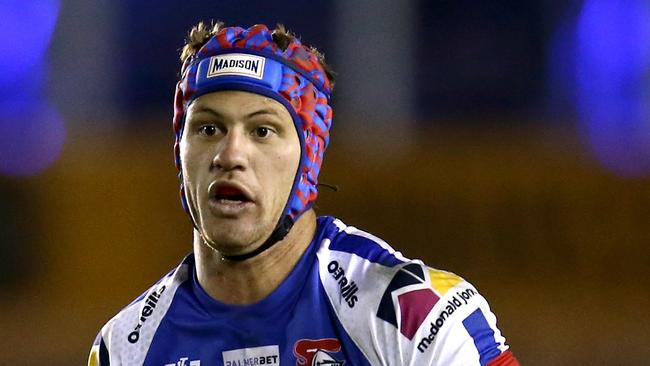
A 2019 NRL study using a smart mouthguard to measure the combined force of hits on players‘ brains has never been published, but the league has now announced a “comprehensive trial” using the same technology to start this season.
The mouthguard technology – HITIQ – was introduced in the 2019 NRL season with much fanfare, with Manly, Brisbane, Melbourne Storm and South Sydney using the device which specifically measures all hits to the head – not just concussions. .
Following inquiries from The Weekend Australian late last year the NRL declined to answer questions on the fate of the study, but on Friday it announced it would start the “first comprehensive trial” of HITIQ with four NRL and four NRLW teams immediately.
The NRL did not reveal who would be overseeing the trial.
The NRL said the Australian Rugby League Commission had approved the trial as there was “no usable data in relation to the performance” of mouthguard technology and head impacts.
A smart mouthguard study is significant for safeguarding players’ brain health because repeated sub-concussive blows over a sustained period of time are the main risk factor for Chronic Traumatic Encephalopathy (CTE) – not the occasional concussion. CTE has been found in league players post-mortem, including Cowboys premiership winning coach Paul Green and Bulldogs great Steve Folkes.

Rugby League Players Association boss Clint Newton told The Weekend Australian he believed the HITIQ mouthguard was a key safety tool and that the 2024 trial would be far more thorough than the previous study.
“This time it’s going ahead on a much deeper level. The pleasing thing is the train has left the station,” he said. “Clubs have been notified and locked in.
“This is part of a first phase of collecting greater levels of data to advance player health and safety to shape the future of the game.
“We are hoping this is a good opportunity for a more collaborative relationship with the NRL on a fundamental matter.
“The utilisation of this technology, and the subsequent collation of player data, will also provide other benefits that can give us a better understanding of head impact, such as insights into training load management.”
Leading experts including Boston University’s Bob Cantu believe the technology will also assist the codes in mitigating the risk of CTE – a degenerative brain disease which has been linked to exposure to head injury over time.
178 hits a game
The 2019 NRL study was to be overseen by associate professor Andrew Gardner, the league’s concussion researcher leading a multi-million-dollar research program into the long-term effects of concussion on retired players.
When asked what happened to the 2019 study, Dr Gardner said he was not involved in the “conduct” of the study.
“I was asked to provide a study plan/design for the research, and then I’ve had no involvement with the conduct of the study, I’ve not seen or heard anything, and I was not tasked with the job of conducting the study,” Dr Gardner said.
The Weekend Australian understands Dr Gardner will not be involved in the 2024 trial.
Previous studies have revealed “head impact events” in NRLW are significant.
One such study involving Dr Gardner found more than 30 per cent of tackles in NRLW games resulted in a hit to the head, with the ball carrier receiving up to 178 hits per game.
Only a fraction of those head impacts caused concussion, underlining the scale of hidden brain injuries escaping the attention of league authorities.
In another published paper, Dr Gardner warned that the scale of sub-concussive hits in NRLW “remains relatively unknown”.
He recommended that “a combination of video verification and mouthguards … would provide a greater level of understanding of head acceleration exposure in elite women’s rugby league”.
Dr Gardner, as well as being a concussion adviser for the NRL, Rugby Australia and the AFL, is also a scientific adviser to HITIQ.
An NRL spokesman confirmed the 2024 trial and that footballers had already been measured up to use the HITIQ technology.
“The NRL has no usable data set in relation to the performance of instrumented mouthguards,” he said.
“The commission has recently approved the implementation of the game’s first comprehensive trial of instrumented mouthguards for NRL and NRLW teams. Four NRL teams and four NRLW teams will participate in 2024. Three NRL teams have already been measured for manufacture of the mouthguards and the participating NRLW teams will be fitted closer to the commencement of the women’s competition.”
Several former rugby league footballers have been found to have CTE post-mortem. AFLW player Heather Anderson and St Kilda great Danny Frawley were also found to have the degenerative brain disease caused by head knocks.
Coroner’s call
The use of smart mouthguards in Australian collision sports was spotlighted last December during the Victorian inquest into Shane Tuck’s death, the AFL player took his life at 38 and was found, at post mortem, to have the worst case of CTE yet identified in an Australian.

Coroner John Cain accepted expert evidence that sub-concussive hits were the leading risk factor for CTE. Smart mouthguards are used in American football and the coroner urged the AFL to “take all reasonable steps” to introduce them for 80 per cent of AFL and AFLW players in the 2024 season.
Additionally, Mr Cain said the AFL should consider making such mouthguards compulsory. The coroner also recommended the league reduce contact training sessions as a way of reducing players exposure to hits.
Mr Cain also recommended independent doctors have the power to overrule AFL club doctors and remove from the game players suspected of a concussion.
While the 2024 season is to start in March, the AFL has yet to say if it accepts the coroner’s reform agenda.
The Tuck inquest is widely seen as a watershed moment for all contact sports, as the findings have shifted the debate to sub-concussive hits being the main causal factor in CTE.
To date none of the major codes has developed protocols addressing the issue.
Experts say reducing exposure to these unseen injuries remains the key to dealing with CTE.
The risk factor
The spotlight is on brain health in the AFL and NRL, with some big stars managing major concussion issues, including Newcastle’s Kalyn Ponga and Melbourne’s Angus Brayshaw.
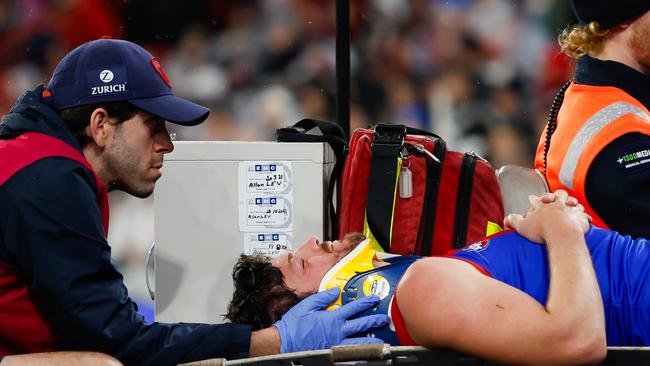
The NRL is debating reducing training sessions in season but is yet to establish when and by how much.
Dr Cantu, a leading expert on CTE, told the Tuck inquest the risk of developing the brain disease was related to cumulative hits to the head. “Cumulatively they [the hits] may have a greater impact than concussion alone, which is very less frequent,” Dr Cantu said. “And those are the majority of hits that somebody takes over their career.”
Dr Cantu, a long-time member of the International Concussion in Sport Group which provides the blueprints for the NRL’s concussion protocols, said years of play was a strong proxy for exposure to head injury and increased the risk of CTE.
While concussion was important, said Dr Cantu, the thousands of brain jolts and hits over a prolonged period were the real risk factor.
Those who played for less than five years had one 10th the risk for CTE as somebody who had played more than 15 years, said Dr Cantu, referring to a study of 631 brain donors who played American football and were diagnosed with CTE after death.
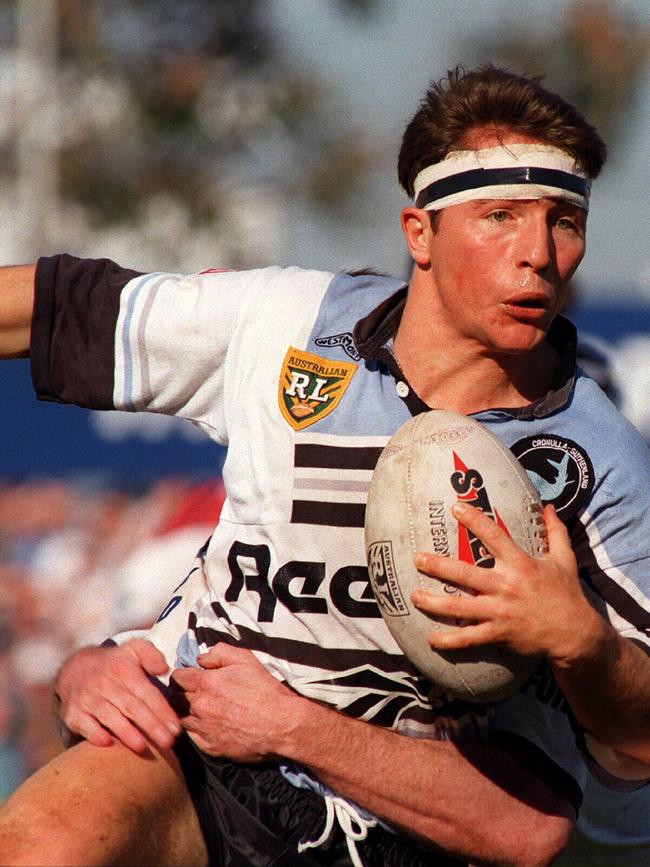
The study, published in the journal Nature Communications, found that for every 1000 hits the risk of CTE increased by more than 20 per cent. Dr Cantu, a co-author of the paper, said while the results were specific to American NFL players, they could be related to contact codes here.
He was critical of the AFL’s concussion protocols during the Tuck inquest. “There was really no mention of CTE, there was really no focus on the effects of repetitive head trauma, and that is something I think is a missed opportunity,” he said, adding hits to the head could be measured with smart mouthguards.
“The general concept [is] that the more repetitive traumas to the head somebody takes, the greater the risk. So the general principle would be transferable to other sports”. The NRL’s top tacklers, the Sharks’ Blayke Brailey and Souths’ Damien Cook, each made more than 1000 tackles last season, with the game’s top 50 tacklers routinely making between 600 and 900.
‘Not at liberty’
Last year HITIQ was unable to shed light on the missing 2019 study, with founder Mike Vegar telling The Weekend Australian “that’s a good question and best directed at the NRL”.
On Friday Mr Vegar said he was pleased to be part of the new trial. HITIQ, which is currently renegotiating its licence with the AFL, says any head impact data collected is commercial in confidence and, as such, “lies with the codes”.
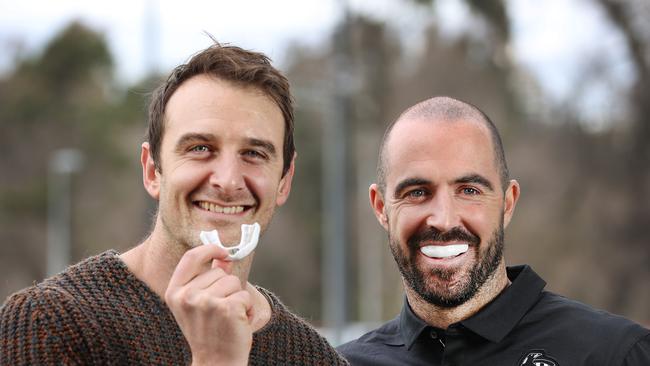
“But one thing I will say is that we have seen incidents of game files where an athlete has had exposure to 54 impacts in one single game,” Mr Vegar said. “There’s a high variability across the population, but there are some high-frequency, high-magnitude impact exposures that these athletes are exposed to. But, in terms of specifics, I’m not at liberty to discuss the code-specific data.”
When first asked by The Weekend Australian last year, the NRL declined to directly answer questions about the fate of the HITIQ trial, but it maintained player welfare was the top priority.
“The NRL maintains an interest in any research consistent with international best practice, which has the potential to improve head injury management,” an NRL spokesman said last year.

“We have a relationship with a number of experts to ensure we are at all times considering all emerging research and available technologies in this ever-evolving and complex area.”
When the NRL announced the study in 2019 it was enthusiastically endorsed by the NRL’s then chief medical officer, Paul Bloomfield, and the RIPA’s Newton, both hailing the trial as being important in protecting players’ brain health.
Dr Bloomfield said the trial would be the key to managing head trauma in the game.
“It could potentially provide us with another support tool to help identify possible head injuries requiring off-field assessment by the club doctors,” Dr Bloomfield said.
Head trauma and sports was the focus of the recent Senate inquiry.
The NRL told the Senate inquiry into concussion and repeated head injury in sport that it had a “a strong interest in instrumented mouthguards”. The NRL’s chief medical officer, Sharron Flahive, said the code was “collaborating” on a UK study with Rugby League where they have been “collecting that data”.

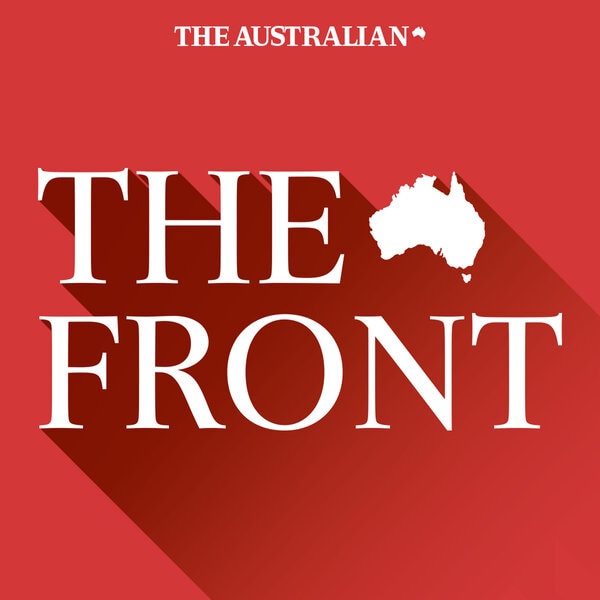


To join the conversation, please log in. Don't have an account? Register
Join the conversation, you are commenting as Logout